 April 2, 2020 John E. Ross, KD8IDJ, Editor
| ||||||
COVID-19 Impact & News Find the latest news and information on the impact of the coronavirus pandemic to ARRL members and our global amateur radio community. FCC Grants Temporary Emergency Authority to WISPs Operating in 5.8 GHz Band The FCC has granted temporary permission to wireless internet service providers (WISPs) in rural portions of 29 states and the US Virgin Islands to operate in the 5.8 GHz band (5.850 - 5.895 GHz). The authorization, to help meet the temporary surge in demand for residential fixed broadband services during the COVID-19 pandemic, The 5.8 GHz grants were effective on March 26. Each grant is for 60 days, provided individual WISPs file STA applications within 10 days of March 26. Amateur radio shares this spectrum on a secondary basis with Dedicated Short-Range Communications (DSRC) systems and industrial, scientific, and medical (ISM) applications, and that status remains unchanged. "[E]ach applicant is independently responsible for complying with the conditions of its grant," the FCC's Keith D. Harper, Associate Chief of the Wireless Telecommunications Bureau's Mobility Division, wrote in granting the request. "Applicants are advised that this includes ensuring proper protection of incumbents in the 5.8 GHz band." The Commission noted that WISPs are responsible for ensuring that they do not cause interference to existing licensees. According to the request, each of the WISPs provides fixed wireless broadband service in rural areas, primarily relying on unlicensed spectrum for last-mile connections to end users. "Many of the WISPs' customers have no other alternative to terrestrial broadband services," the request said. The Commission's emergency grant explicitly requires that the WISP operations be conducted on a non-interference basis. Read more. HamSCI 2020 Workshop Successfully Reworked as a Virtual Event Despite the coronavirus pandemic, the March 20 - 21 HamSCI Workshop went on as scheduled, moving to a free, all-digital webinar workshop. The theme of the 2020 workshop was "The Auroral Connection -- How does the aurora affect amateur radio, and what can we learn about the aurora from radio techniques?" Organizer and
University of Scranton professor Nathaniel Frissell, W2NAF, told ARRL that he was quite happy with the outcome, after the in-person workshop had to be called off as a result of the coronavirus pandemic. "In some ways, it was good for us," Frissell said. "We actually got many more participants than had we just held it in person." Expectations for the live event were for about 100 participants. Online, Zoom -- the webinar platform used for the workshop -- reported 290 unique logins from 24 countries. After cancellation of the in-person workshop, Frissell had to scramble to make the virtual event a reality. "I had the webinar running in practice mode for about 2 or 3 days before the workshop, and I let presenters log in whenever they wanted to test things out," Frissell said. Another hurdle to overcome was figuring out how to convert poster presentations to electronic format. "The Aurorasaurus group really helped out with that," Frissell said, noting that Aurorasaurus Project manager Laura Brandt came up with a method for presenting the posters electronically and made sure the poster session ran smoothly. In a blog post, Brandt called the workshop "the first of its kind in heliophysics." The Aurorasaurus Project theme is "Reporting Auroras from the Ground Up." "The annual HamSCI Workshop provided the perfect opportunity to introduce citizen scientists and scientists from the aurora and ham radio communities and build connections for future collaboration,"
Brandt said. "Both aurora and ham radio citizen scientists work closely with the Earth's atmosphere and ionosphere, but while aurora folks tend to think about how what we see reveals aspects of the ionosphere, ham radio operators tend to think about what radio waves can tell us about the ionosphere." Oral presentations were delivered as originally scheduled and in the same format as if they were being delivered at the in-person workshop. The workshop served as a team meeting for the HamSCI Personal Space Weather Station project that's funded by a National Science Foundation (NSF) grant to Frissell as its principal investigator. The project seeks to harness the power of a network of radio amateurs to better understand and measure the effects of weather in the upper levels of Earth's atmosphere. Workshop presentations are being archived. Read more. ARRL Field Day 2020 -- A Time to Adapt Many individuals and groups organizing events for ARRL Field Day 2020 have been contacting ARRL for guidance on how to adapt their planned activities in this unprecedented time of social distancing and uncertainty. "Due to the unique situation presented this year, this can be an opportunity for you, your club, or your group to try something new," ARRL Contest Manager Paul Bourque, N1SFE, said. "Field Day isn't about doing things the same way year after year. Use this year to Social distancing and state and local requirements very likely will impact just how -- and even whether -- you are able to participate in Field Day this year. ARRL continues monitoring the coronavirus situation, paying close attention to information and guidance offered by the Centers for Disease Control and Prevention (CDC). If social distancing means that Class A with a 30-member team set up in a city park won't work this year, then it's time for a Plan B. Part of the Field Day concept has always been adapting your operation to the situation at hand. At its heart, Field Day is an emergency communication demonstration. Field Day rules are flexible enough to allow individuals and groups to adjust their participation and strategies in a way that still addresses their needs while being fun. Some possibilities include:
One big impact this year will be a decline in public visibility and any interaction with the visitors. Prudence may dictate dispensing with the ham radio PR table to attract passersby, should you set up in a more public location. It's okay not to score all the bonus points you may have attempted in the past. Local and served agency officials may be unwilling to visit, which is understandable under the circumstances. Do be sure to reach out to them as part of your preparations and remind them that you look forward to continuing your working relationship with them in the future. The impact will differ from place to place, so ARRL recommends that all amateur radio clubs participating in Field Day stay in regular contact with local or state public health officials for their advice and guidance on hosting Field Day activities. "With any emergency preparedness exercise, it's not about adapting the situation to your operation; it's about adapting your operation to the situation that presents itself," Bourque said. "Try something different." Read more. -- Thanks to Paul Bourque, N1SFE, and Dan Henderson, N1ND ARRL Podcasts Schedule
Both podcasts are available on iTunes (iOS) and Stitcher (Android), as well as on Blubrry -- On the Air | Eclectic Tech. Canceled Ohio ARES State Conference Morphs into Statewide Communication Exercise Ohio Amateur Radio Emergency Service (ARES) canceled the Ohio ARES State Conference set for April 4 due to the coronavirus pandemic and repurposed the date for a statewide communication exercise, with an emphasis on communicating from home. "Ohio has a high-profile station at the state Emergency Operations Center (EOC), with regular weekly EOC nets," ARES Section Emergency Coordinator Stan Broadway, N8BHL, said. "But with the The exercise was the brainchild of Assistant SEC Tim Price, K8WFL, who suggested it would be a great way to showcase amateur radio's capabilities for state and community leaders. The Ohio HF Emergency Net will take check-ins on 40 and 80 meters (SSB), with the Ohio Digital Emergency Net (OHDEN) operating on 80 meters. Then, around 1 PM ET, a linked digital radio system will be brought into play, using DMR's Ohio talk group linked to the Fusion "Ohio Link" group. Broadway said stations will simply check in; no traffic will be handled. "It's just designed to prove we can communicate from home, while locked down, and still get the job done," he told ARRL. "This is the same network topology used for the Ohio Watch Desk Project, providing statewide reporting during such events as the Memorial Day tornado outbreak last spring," Broadway said. The reports are fed directly to the watch desk at Ohio's state EOC, to enhance situational awareness for state emergency managers. "We plan to video an operator on the State House steps, talking statewide using a small handheld," Broadway said. "This demonstration can be used to enhance our discussion of amateur radio with local and state officials." Broadway said HF can be problematic most of the time if storms are moving across, producing static, and digital modes fill in the gap. Read more. -- Thanks to Stan Broadway, N8BHL Contest Entry Features Multiple Operator Locations and Remote Transmitter-Receiver Site Restrictions on gatherings due to the COVID-19 pandemic recently prompted a novel approach to multioperator/multi-transmitter operation. The WW2DX entry in the CQ World Wide WPX SSB Contest over the March 28 - 29 weekend featured 10 operators, each at separate locations around the US and in Europe, all operating via a
single remote site on the coast of eastern Maine. WW2DX entered in the Multioperator, High Power category, racking up a claimed score of 32,026,176 points. NR6O operated from the west coast with a smaller complement of remote operators in the Multioperator, High Power category. "It was so much fun to work this contest," one of the WW2DX operators, 17-year-old Connor Black, W4IPC, said. "This was the most fun I've had in a contest ever. We had no equipment failures and pulled off, hopefully, a new US record." In soapbox comments on the 3830scores.com website, Lee Imber, WW2DX, expressed his belief that this year's contest would be viewed as a turning point in multioperator contesting. Participants had nothing but a web browser and a USB headset to operate, with the closest team partner some 625 miles away. "No radio, no hardware, no traveling, and no external logger," he noted.
Team members brainstormed various configurations. Rock Schrock, WW1X, custom-engineered the requisite software. In addition to Black, the team included a few other young -- but experienced -- contesters: 13-year-old Charles Hoppe, AA4LS; 17-year-old Mason Matrazzo, KM4SII, and 21-year-old Tucker McGuire, W4FS. The more senior team members were K1LZ, K3JO, W1ADI, W2RE, WW1X, and WW2DX. "We also used Slack and created a channel for the team to stay connected over the weekend, and this ended up being half the fun," Imber said. Another feature included the "multi bell," which would chime whenever a new multiplier was logged. He said it was "awesome having seasoned pro operators sharing and mentoring these young contesters." "The world is experiencing something on a whole new level," he observed. Read more. To All ARRL Members and ARRL VEC Accredited Volunteer Examiners We know many examiners have canceled amateur radio license exam sessions to meet the requirements and recommendations of national and local government and of health officials. The health and safety of examinees and our Volunteer Examiners (VEs) is first and foremost in any decision-making process. The ARRL Volunteer Examiner Coordinator (VEC) does not offer video-supervised online amateur radio licensing exams at the present time. We are aware, however, that some VE teams are exploring alternative formats on a local basis. Please use ARRL's License Exam Search to find scheduled exam The ARRL VEC is continuing to process license examination materials from VEs who have completed exam sessions, although some delays may occur under the circumstances. The ARRL VEC electronically forwards all required data to the FCC for qualified examinees. We understand that some examination candidates are continuing their studies toward new amateur radio licenses and license upgrades. We also know some will be frustrated that, at this time, the ARRL VEC does not offer online licensing exams. Amateur radio is not alone in this challenge, though. While each of us continues to respond to the immediate evolving crisis, we also know that we must keep an eye on the future. Throughout its decades of service, the VEC system has served the FCC as a shining example of the successes of a privatized system. The ARRL VEC and our VEs are recognized throughout the Amateur Radio Service for our integrity and efficiency. Adapting our all-volunteer license examination administration will be a challenge, but it's a challenge we are committed to undertake in order to advance the program and improve service. While we face unprecedented challenges, opportunities also await. We are grateful to support radio amateurs in our common pursuit of skill, service, and discovery. ARRL and the ARRL VEC remain steadfast in serving the amateur radio community. We will provide updates as they become available. The K7RA Solar Update Tad Cook, K7RA, Seattle, reports: A new sunspot appeared on the last day in March and the first day in April, with daily sunspot numbers of 12 and 13, respectively. Prior to this, no sunspots had been seen since earlier in March, when daily sunspot numbers were 13 and 12, on March 8 - 9.
Predicted solar flux for the next 45 days is 70 on April 2 - 7; 69, 68, and 68 on April 8 - 10; 70 on April 11 - 22; 68 on April 23 - May 7, and 70 on May 8 - 16. Predicted planetary A index is 8 on April 2 - 3; 5 on April 4 - 14; 10 on April 15; 8 on April 16 - 19; 5 on April 20 - 25; 12 on April 26 - 27; 8 on April 28 - 29; 5 on April 30 - May 11; 10 on May 12, and 8 on May 13 - 16. Sunspot numbers for March 26 - April 1 were 0, 0, 0, 0, 0, 12, and 13, with a mean of 0. The 10.7-centimeter flux was 70.2, 69.4, 69.2, 68.8, 69.3, 69.9, and 69.2, with a mean of 71.1. Estimated planetary A indices were 5, 5, 5, 7, 11, 15, and 6, with a mean of 7.7. Middle latitude A index was 5, 4, 4, 6, 8, 10, and 4, with a mean of 5.9. A comprehensive K7RA Solar Update is posted Fridays on the ARRL website. For more information concerning radio propagation, visit the ARRL Technical Information Service, read "What the Numbers Mean...," and check out K9LA's Propagation Page. A propagation bulletin archive is available. Monthly charts offer propagation projections between the US and a dozen DX locations. Share your reports and observations. Just Ahead in Radiosport
See the ARRL Contest Calendar for more information. For in-depth reporting on amateur radio contesting, subscribe to The ARRL Contest Update via your ARRL member profile email preferences. Western Pennsylvania ARES Group Conducts District-Wide Simplex Drill Amateur Radio Emergency Service (ARES) Western Pennsylvania Southwest District, which includes Allegheny, Armstrong, Beaver, Butler, Fayette, Greene, Indiana, Washington, and Westmoreland counties, conducted a district-wide simplex practice drill on March 21. The exercise lasted about 4 hours, with all participants meeting on their local ARES county repeaters. Each county Emergency Coordinator served as net control stations, and all stations kept logs, All stations were asked to stay on their county simplex frequency for at least 15 minutes before going to other county simplex frequencies. After checking in on the repeater, all stations switched to their county-assigned simplex frequencies, to test the capabilities of operators and stations and their simplex operating range. In all, 162 operators participated in the drill. "We have received so many great comments about the drill that I plan on running it again sometime after the Simulated Emergency Test (SET) drill on April 4," Western Pennsylvania Southwest District Emergency Coordinator Terry Nemitz, KA3UTD, said. "I also heard a lot of comments about operators wanting to improve their stations. A good thing." COVID-19 Affects Space Station Crew Transition International Space Station (ISS) Expedition 62 crew is readying its Soyuz MS-15 vehicle for an April 17 departure back to Earth. Expedition 62 members are NASA Flight Engineer Jessica Meir; Flight Engineer Andrew Morgan, KI5AAA, and Commander Oleg Skripochka, RA0LDJ. The Expedition 63 crew members who are to replace them are nearing an April 9 launch aboard the Soyuz MS-16 vehicle. NASA astronaut Chris Cassidy, KF5KDR, and Roscosmos cosmonauts Anatoly Ivanishin and Ivan Vagner arrived this week at the Baikonur Cosmodrome in Kazakhstan for final training. The
Expedition 63 trio is scheduled to live aboard the station for a little longer than 6 months, with Cassidy as commander. Because of travel limitations due to the COVID-19 pandemic, Cassidy's family will watch from home when he blasts off on April 9. Launch day at Baikonur is usually a festive affair. "But it'll be completely quiet," Cassidy said in a Spaceflight Now satellite interview from Star City, Russia. "There won't be anybody there. A NASA protocol has long been in place to prevent astronauts from carrying disease microbes into space." NASA said it "will continue to evaluate and augment this plan, in coordination with its international and commercial partners," if needed. Russia's state space corporation Roscosmos has shut down all media activity surrounding the Soyuz launch, barring journalists from covering the mission in person. Russia will still livestream the launch; NASA typically carries all of its crewed launches online via its NASA TV channel. SpaceX will launch its Crew Dragon capsule with NASA astronauts Bob Behnken, KE5GGX, and Doug Hurley aboard the spacecraft, "no earlier than mid-to-late May," NASA said, marking the first crew launch from the US since 2011. This is the final flight test of the system before SpaceX is certified to carry out operational crew flights to and from the ISS for NASA. Pending the outcome of the demonstration test, SpaceX hopes to send its first operational crew of astronauts to the ISS aboard its Crew Dragon capsule later this year. Read more. -- Thanks to NASA, AMSAT News Service In Brief...
Upcoming ARRL Section, State, and Division Conventions Note: Many conventions and hamfests have been canceled or postponed due to the coronavirus pandemic. Check the calendar of canceled events on the ARRL website.
Find conventions and hamfests in your area.
. .
Subscribe to...
Free of charge to ARRL members...
| ||||||
.jpg) was one of multiple waivers issued in the past week that grant temporary access to a variety of bands in response to the uptick in residential broadband demand.
was one of multiple waivers issued in the past week that grant temporary access to a variety of bands in response to the uptick in residential broadband demand..jpg)
.jpg)
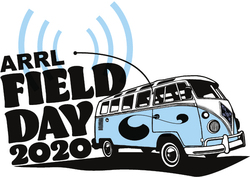 develop and employ a new approach that is in line with the current circumstances."
develop and employ a new approach that is in line with the current circumstances."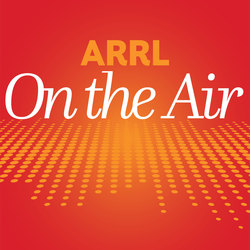 The latest (March 12) episode of the On the Air podcast focuses on how to calculate feed line loss, real-world examples of how digital and analog FM transceivers handle weak signals, and an interview with Rob Macedo, KD1CY, Eastern Massachusetts ARES Section Emergency Coordinator and SKYWARN Coordinator for the National Weather Service Boston/Norton office. Rob offers information about how hams can get involved with SKYWARN.
The latest (March 12) episode of the On the Air podcast focuses on how to calculate feed line loss, real-world examples of how digital and analog FM transceivers handle weak signals, and an interview with Rob Macedo, KD1CY, Eastern Massachusetts ARES Section Emergency Coordinator and SKYWARN Coordinator for the National Weather Service Boston/Norton office. Rob offers information about how hams can get involved with SKYWARN. The latest episode of the Eclectic Tech podcast (Episode 4) includes an interview with Eric Knight, KB1EHE, updating the RF-based Alzheimer's therapy featured in QST, and an interview with Robert Dixon, W8ERD, about the "Wow!" signal and SETI. Dixon was the Big Ear project director when the Wow! signal was received.
The latest episode of the Eclectic Tech podcast (Episode 4) includes an interview with Eric Knight, KB1EHE, updating the RF-based Alzheimer's therapy featured in QST, and an interview with Robert Dixon, W8ERD, about the "Wow!" signal and SETI. Dixon was the Big Ear project director when the Wow! signal was received..jpg) national emphasis on staying home, we turned the vacated day into a 2-hour series of nets designed to have amateur operators check in using their home stations."
national emphasis on staying home, we turned the vacated day into a 2-hour series of nets designed to have amateur operators check in using their home stations."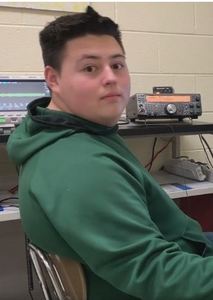
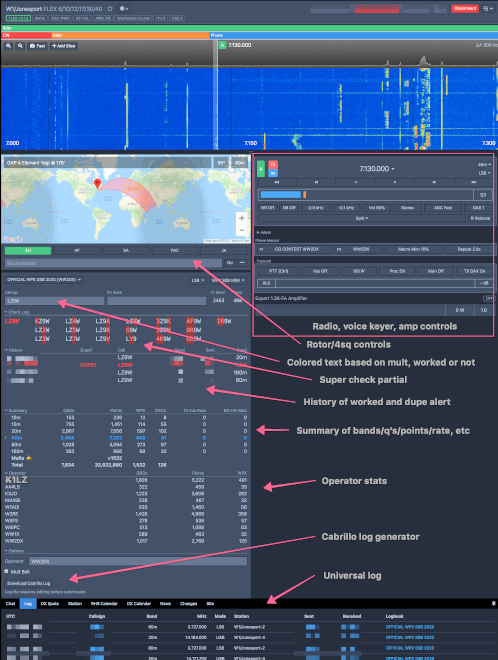
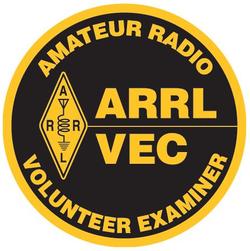 sessions in your area and verify with the local exam team that the session is still being held.
sessions in your area and verify with the local exam team that the session is still being held.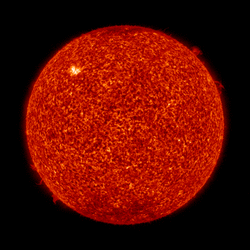 Average daily solar flux this week (March 26 - April 1) declined from 71.1 to 69.4. Average daily geomagnetic indicators were identical to the previous week, with planetary A index at 7.7 and middle latitude A index at 5.9.
Average daily solar flux this week (March 26 - April 1) declined from 71.1 to 69.4. Average daily geomagnetic indicators were identical to the previous week, with planetary A index at 7.7 and middle latitude A index at 5.9..jpg) which were to be sent to their local Emergency Coordinator for forwarding to the District Emergency Coordinator.
which were to be sent to their local Emergency Coordinator for forwarding to the District Emergency Coordinator.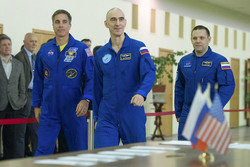
.jpg) Former ARRL DXCC Manager Don Search, W3AZD, of Davie, Florida, died on March 26. Search was widely known throughout the DXing community and was a fixture at many hamfests and conventions, including the Dayton Hamvention®, where he checked cards for years. An ARRL Life Member, he was 80. A skillful DXer, Search was on the DXCC Honor Roll with 378 entities confirmed on phone. He and his partner Hope Smith, WB3ANE, were early members of the National Capitol DX Association (NCDXA) -- traveling from Florida to attend monthly meetings as recently as 2018. He also belonged to the Potomac Valley Radio Club (PVRC). According to reports, Search had struggled with health issues related to a fall last December in which he struck his head. Search worked as an electronics technician in Maryland before serving for about 15 years as ARRL DXCC Manager from the late 1970s until the early 1990s.
Former ARRL DXCC Manager Don Search, W3AZD, of Davie, Florida, died on March 26. Search was widely known throughout the DXing community and was a fixture at many hamfests and conventions, including the Dayton Hamvention®, where he checked cards for years. An ARRL Life Member, he was 80. A skillful DXer, Search was on the DXCC Honor Roll with 378 entities confirmed on phone. He and his partner Hope Smith, WB3ANE, were early members of the National Capitol DX Association (NCDXA) -- traveling from Florida to attend monthly meetings as recently as 2018. He also belonged to the Potomac Valley Radio Club (PVRC). According to reports, Search had struggled with health issues related to a fall last December in which he struck his head. Search worked as an electronics technician in Maryland before serving for about 15 years as ARRL DXCC Manager from the late 1970s until the early 1990s.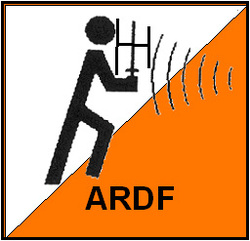 USA Amateur Radio Direction Finding Championships Canceled The ARRL ARDF Committee has made the difficult decision to cancel the 20th USA ARDF Championships, which were set to be held this summer.
USA Amateur Radio Direction Finding Championships Canceled The ARRL ARDF Committee has made the difficult decision to cancel the 20th USA ARDF Championships, which were set to be held this summer. 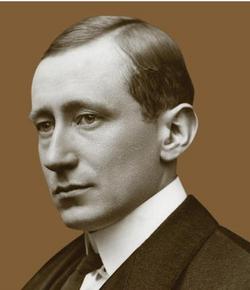 International Marconi Day (
International Marconi Day (







